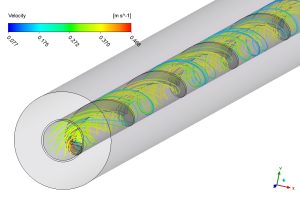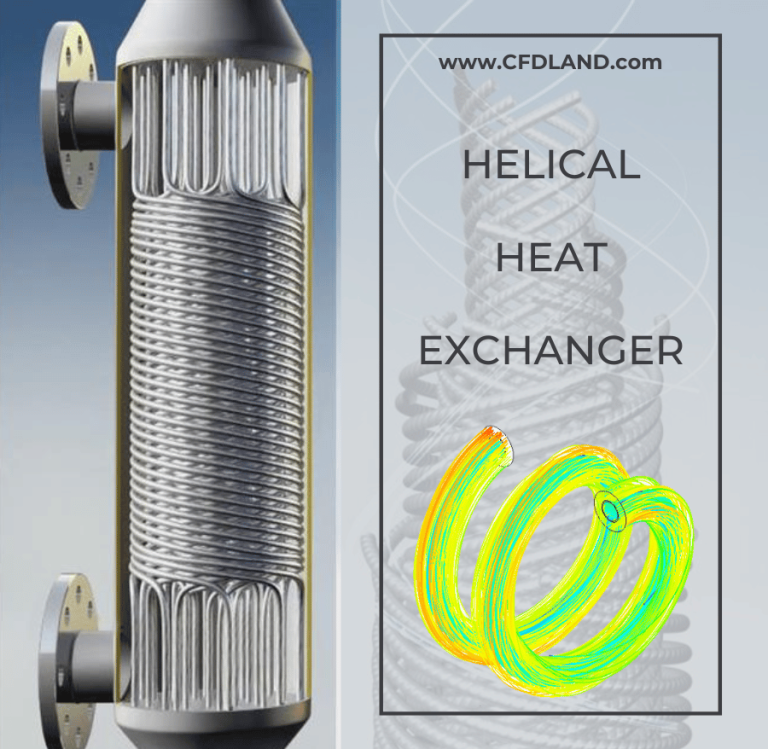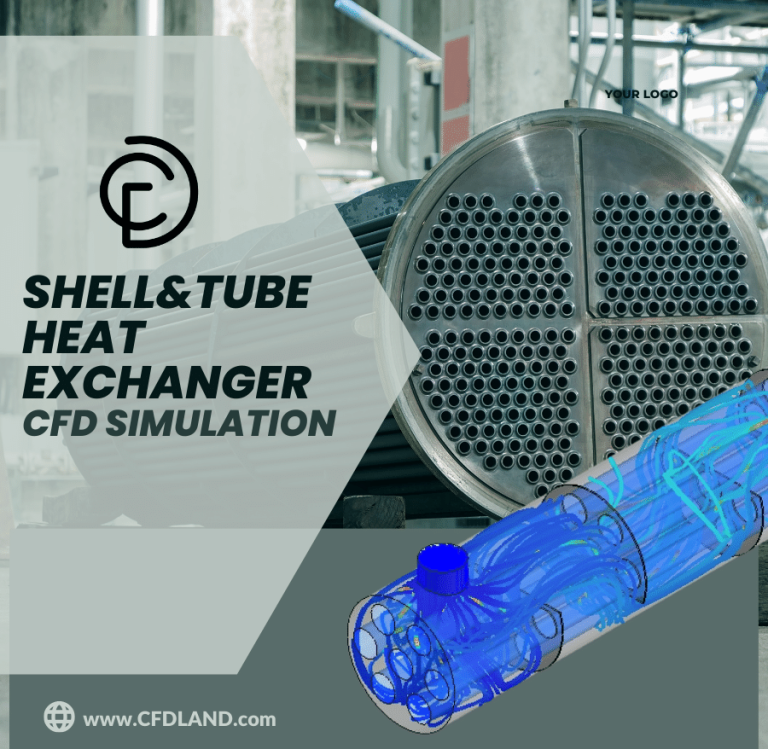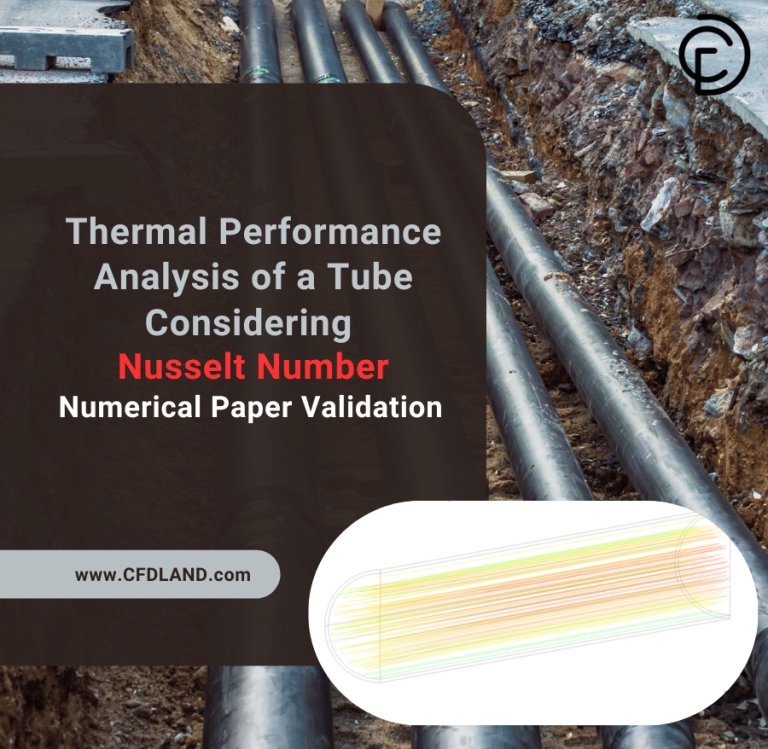Twisted Tape in Double-pipe Heat Exchanger CFD Simulation, ANSYS Fluent Training
Twisted Tape in Double-pipe Heat Exchanger CFD Simulation, ANSYS Fluent Training
- Upon ordering this product, you will be provided with a geometry file, a mesh file, and an in-depth Training Video that offers a step-by-step training on the simulation process.
- For any more inquiries regarding the product, please do not hesitate to reach out to us at info@CFDLAND.com or through our online support assistant.
€190.00 Original price was: €190.00.€99.00Current price is: €99.00.
To increase heat transfer efficiency in double-pipe heat exchangers, twisted tape inserts are a commonly utilized enhancement technique. The fluid flow is forced into a spiral motion by inserting a twisted tape inside the inner pipe, upending the laminar boundary layer and increasing turbulence. As a result of the increased turbulence, the fluid mixes better and the heat transfer coefficient rises greatly, improving thermal performance. This CFD simulation is contingent upon the reference paper entitled “ Numerical study on heat transfer enhancement and flow characteristics of double pipe heat exchanger fitted with rectangular cut twisted tape”.
- Reference [1]: Barzegar, Ali, and Dovood Jalali Vahid. “Numerical study on heat transfer enhancement and flow characteristics of double pipe heat exchanger fitted with rectangular cut twisted tape.” Heat and Mass Transfer12 (2019): 3455-3472.
Figure 1: CFD Model of Twisted Tape in Double-pipe Heat Exchanger
Simulation Process
One of the most challenging parts of the present simulation is designing the twisted tape inside the inner tube of the double-pipe heat exchanger. It is modeled using Design Modeler software. Then, a hexagonal grid is produced, resulting in Hybrid grid. The article represents an estimation of water properties by Regression equations in Table 4. Consequently, a User-defined Function is written to employ all the properties dependent on temperature.
Figure 2: Grid generation over Twisted Tape in Double-pipe Heat Exchanger
Post-processing
The Nusselt number analysis provides quantitative evidence of this enhancement, showing an impressive increase from 34.52 in the standard exchanger to 43.16 with the twisted tape installed – a 25% improvement in thermal performance. This substantial gain occurs primarily because the swirling motion continuously brings fresh fluid into contact with the heat transfer surfaces while simultaneously increasing the effective flow path length. Additionally, the velocity contours depicts secondary flow patterns between the tape edges and pipe walls that create localized mixing zones with particularly high heat transfer rates. Despite these benefits, it’s worth noting that this enhanced thermal performance comes with a moderate pressure drop penalty of approximately 18%, which is still favorable compared to other enhancement techniques.
Figure 3: Localized mixing zones around twisted tape inside heat exchanger
The velocity streamline visualization perfectly captures why twisted tape inserts dramatically enhance heat transfer performance in the double-pipe configuration. Looking at the flow patterns, you can clearly see how the fluid transitions from a relatively straight path to complex spiral trajectories with velocities ranging from 0.07 m/s (blue regions) to 0.438 m/s (red zones). What’s fascinating is how the twisted geometry forces fluid particles to follow elongated helical paths, which consequently increases their residence time within the exchanger. Furthermore, this swirling motion repeatedly disrupts the thermal boundary layer that normally insulates pipe walls, leading to significantly improved thermal mixing. The rectangular cuts in the twisted tape create additional flow disturbances that further intensify turbulence, especially in the near-wall regions where heat exchange is most critical.
We pride ourselves on presenting unique products at CFDLAND. We stand out for our scientific rigor and validity. Our products are not based on guesswork or theoretical assumptions like many others. Instead, most of our products are validated using experimental or numerical data from valued scientific journals. Even if direct validation isn’t possible, we build our models and assumptions on the latest research, typically using reference articles to approximate reality.
Yes, we’ll be here . If you have trouble loading files, having technical problems, or have any questions about how to use our products, our technical support team is here to help.
You can load geometry and mesh files, as well as case and data files, using any version of ANSYS Fluent.
€170.00 Original price was: €170.00.€145.00Current price is: €145.00.

€120.00 Original price was: €120.00.€75.00Current price is: €75.00.

€130.00 Original price was: €130.00.€85.00Current price is: €85.00.

€360.00 Original price was: €360.00.€185.00Current price is: €185.00.

€120.00 Original price was: €120.00.€65.00Current price is: €65.00.

€360.00 Original price was: €360.00.€180.00Current price is: €180.00.





















Reviews
There are no reviews yet.